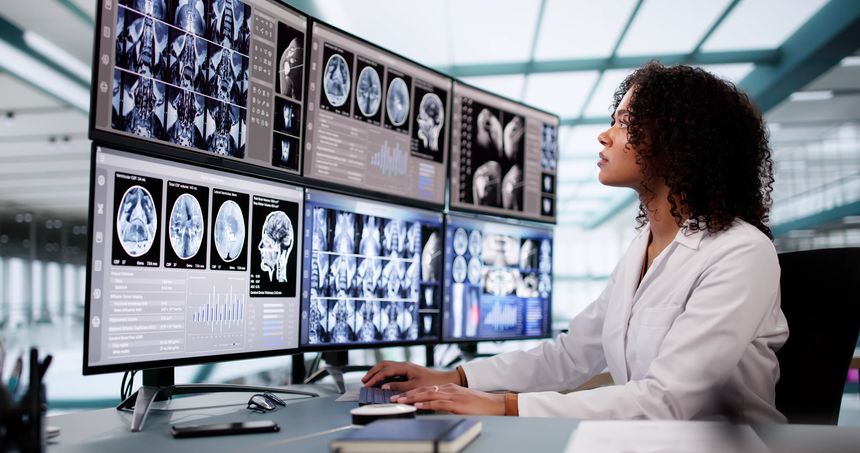On November 21, 2025, the Centers for Medicare & Medicaid Services ("CMS") took another significant step in advancing telemedicine by finalizing a major policy update for Medicare hospital outpatient settings.
The agency confirmed that it would make the virtual direct supervision of Level 2 diagnostic tests permanent under the 2026 Outpatient Prospective Payment System ("OPPS") Final Rule. This move aligns with CMS's earlier action in the 2026 Medicare Physician Fee Schedule ("PFS") Final Rule, published on October 31, 2025, which had already made virtual direct supervision permanent for physician offices and Independent Diagnostic Testing Facilities ("IDTFs").
We had a post about the PFS development here.
In this post we will cover the key aspects of the OPPS rule.
Virtual Supervision for Level 2 Diagnostic Tests
The OPPS Final Rule now solidifies the use of real-time, two-way audio and video technology to supervise Level 2 diagnostic tests in Medicare hospital outpatient settings. These tests include complex procedures like MRI with contrast and CT scans with contrast, which typically require direct supervision.
CMS's new rule ensures that a supervising physician or non-physician practitioner ("NPP") can satisfy the presence and "immediate availability" requirements remotely, without needing to be physically present. This allows hospitals and outpatient settings to continue leveraging telehealth capabilities, which became crucial during the COVID-19 pandemic.
Diagnostic Test Flexibility Becomes Permanent
This decision permanently resolves the temporary flexibility CMS had allowed during the public health emergency ("PHE"). In the earlier phases of the PHE, virtual direct supervision was permitted under emergency rules, but CMS's action today makes this flexibility a permanent feature of the Medicare system starting January 1, 2026.
Real-Time, Two-Way Audio/Video Technology Required
Supervising physicians or NPPs must use real-time, interactive audio and video technology to ensure that they can remain virtually present and "immediately available" throughout the test's performance. Importantly, audio-only communication does not meet the supervision requirement under this policy. This underscores CMS's emphasis on maintaining high standards for patient safety and quality of care while embracing modern technology.
Dependent on State Law
As with the PFS rule, Medicare’s authorization of the use virtual supervision of tests that require direct supervision to Medicare hospital outpatients is dependent on state law permitting – or at least not barring – virtual supervision of contrast studies.
Impact on Hospital Outpatient Settings
While CMS had already finalized the 2026 PFS to extend these virtual supervision provisions to diagnostic tests in physician offices and IDTFs, today’s decision extends the same benefit to Medicare hospital outpatients performed in hospital radiology and other outpatient departments, as well as in off-campus provider-based departments. The change is expected to significantly improve the accessibility and efficiency of diagnostic services, particularly for patients in rural or underserved areas, where access to in-person physician supervision may be limited.
Looking Ahead
This development represents a significant shift towards embracing technology in healthcare. With both the PFS and OPPS Final Rules for 2026, CMS has paved the way for broader virtual supervision of advanced diagnostic imaging studies where contrast media is administered especially for diagnostic tests require the presence and immediate availability of the direct supervising physician/NPP throughout the performance of the Level 2 test. By making virtual direct supervision permanent, CMS is improving both the accessibility and flexibility of providing these important diagnostic testing services to Medicare beneficiaries.
These changes are especially beneficial for outpatient settings, where they will help streamline workflows, reduce the need for on-site staffing, and allow healthcare providers to better manage patient volume. Hospitals, physicians, and NPPs will now have clearer guidelines for using electronic tools in diagnostic supervision, ensuring compliance while enhancing patient care.
As always, the healthcare landscape continues to evolve, and today’s announcement is another step in ensuring that Medicare beneficiaries receive timely, efficient, and high-quality care. For those looking to learn more or prepare for the January 2026 implementation, it’s essential to stay updated on CMS’s final policies and guidance around virtual supervision.
Reed Smith will continue to follow developments with regard to Medicare payment policies. If you have any questions about this development or about payment policies in general, please do not hesitate to reach out to the authors or the health care lawyers at Reed Smith.



/Passle/67292836ee4aa642c0980b65/SearchServiceImages/2025-11-20-21-01-06-217-691f819226700f1b95b84e39.jpg)
/Passle/67292836ee4aa642c0980b65/SearchServiceImages/2025-11-13-02-39-50-388-691544f6d27e4830197c7465.jpg)
